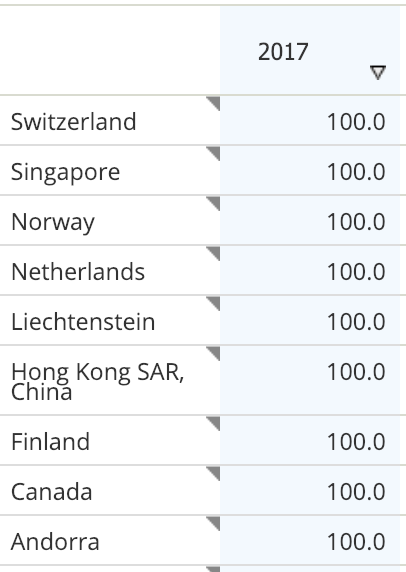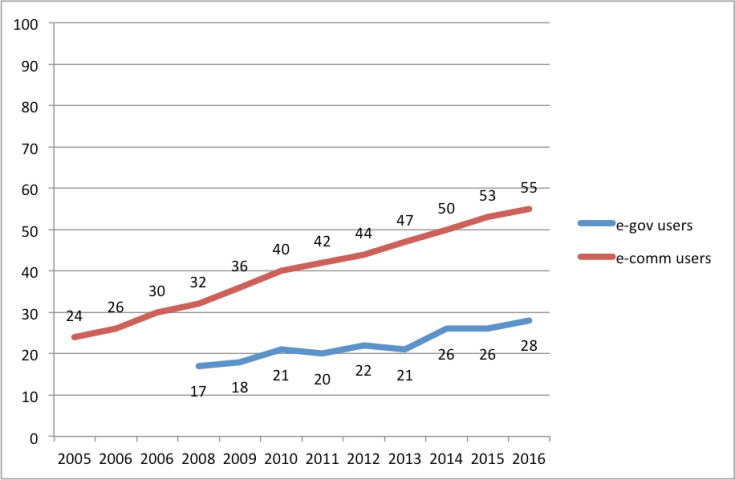As practitioners know, progress in digital government is painfully slow. One can see this in key events such as EU ministerial conferences, where the debate seemed eternally repeating itself.
Yet something has changed over the last years. I saw that in Tallinn in 2017, and recently at the Helsinki ministerial conference. Progress is more real, the debate is more concrete. The gap between EU policy conferences and real-world has narrowed.
One sign of this progress is the KPI mentioned in the official speeches to show progress and success.
Back in 2001, at the time of the first conference in Brussels, the KPI was how many million Euros were going to be spent on projects.
At Manchester in 2005, the usage of the eGovernment indicators had become widespread. The KPI was service availability: what % of services were fully interactive. This was a stunning success of the “benchmarking eEurope” indicators first established in 2001.
So this indicator remained used and abused for many years. Around 2008, at the time of the Malmoe conference and declaration, another indicator started to be frequently mentioned: the uptake by citizens and business, measured through Eurostat surveys. This showed a permanent lag in citizens adoption of eGovernment, and the limitations and perils of a supply side approach.
In Tallinn 2017, these percentages were complemented by data on the number of transactions, as produced directly by the services. Member states established dashboard showing how many payments citizens made or how many certificates they downloaded. The indicator is similar to the previous one produced by Eurostat, but instead of asking citizens whether they used eGovernment, governments start using the data they already had. In other words, by reusing the data held in their databases governments applied the once-only principle to benchmarking.
And last week, in Helsinki , a new KPI was used, measuring access data to base registries and traffic through data exchanges. Government used the data they hold to show not only service uptake by citizens, but progress in back office reorganisation and adoption of base registries, by other public administrations and also by private companies.
This is a remarkable evolution. We are getting real. Indicators have evolved in three positive directions:
- From input to output to adoption.
- From front-office to back-office.
- From surveys to reuse of administrative data.
It might be the effect of the adrenaline from the conference, but I am much more optimistic on European Digital Government. And even if it is just adrenaline – this is a remarkable result for a digital government conference.




